|
Language, conditions for communication, and even the inexplicability of supra-individual phenomena at the personal level are topics that Pavel Sterec addresses in his work. A student of the Prague School of Arts (AVU), working in Miloš Sejn’s studio for conceptual design, his works define motivation and position as well as the general conditions for artistic production and comprehensibility.
Strong inspiration from the Taiwanese performer, Tehching Hsieh, led Sterec to explore, as part of his earlier studies, the relationship between the artist and society as part of a series of “squatter” performances in the project, Domov (home). Even if he, himself, ranks them as part of his pre-artistic phase, on the whole, the subsequent creations represent an important initial motivation for these acts: he allowed himself, for example, to be wrapped in an opaque plastic bag. Being imprisoned in this manner, he was “dropped off” at a garbage dumpster. He remained there for four hours until the police stopped the event. During a solitary series he lived in various temporary accommodations in isolated places. Even if the most important part of these events for Sterec was the actual experience (the events were not public and were only barely documented), the stunts culminated in questioning the transferability and comprehen- sibility of the author’s response.For a long time, Sterec’s primary subject was language as both bridge and barrier to communication. This was captured in the Miss Understanding and Walkmenáři projects. Miss Understanding was conceived and developed together with Vilém Novák. Preparations included half a year of memorizing a collection of conventional signs comprised of words using as few letters as possible from the standard alphabet, i.e. more or less cries that took the place of select letters. They introduced a simple language that was understandable only to the actors in the performance. The preparation for the event led to the development of voice recognition software that translated the cries into Czech. The public event ironically entitled “conference” took place in a space whose walls the authors constructed of various pieces of rubbish. The authors’ “cry” dialogue,during which an assistant served alcohol and mini-sandwiches, ends in the moment when the software automatically stops working. This is because the authors are unable to continue to articulate precisely the sounds they learned. Thus the machine can no longer translate. The artist also worked with an artificial language in Walkmenáří. This piece’s content bears the spirit of the artist’s long-term interest in performance as well as live events. In the piece, a group of volunteers, who have been blindfolded, answer questions in a synchronized fashion. They listen to the question via walkmans placed on their heads. The answers to essentially intimate questions remain secret, despite the public nature of the event. This is because they are expressed via a series of physical actions, about which the volunteers had been instructed ahead of time. The viewer, who cannot understand the significance of these movements, can only follow the differences in the answers of individual actors. Even if one can find similarity here to the post-structural understanding of language as a system of differences, there is a thin line drawn here between the secrecy of various gestures and the revelations of the sincere answers made in this way. Sterec level-headedly and unyieldingly expresses the factual impossibility of expressing our most internal essence externally. Similarly, he used decoding as a new type of coding in Miss Understanding. He researches the conditions for a function- ing relationship between the author and the viewers (audience) in his other works as well. In these he reduces the relationships to a channel that links the sender to the receiver. On one hand this is a secretive intervention, where thanks to live, pirate radio broadcasts he breaks into the public audio space in restaurants and shops. On the other hand, in the role of author, he assumes the position of the receiver and discusses this with the viewers. This specific role can be seen mainly in Trojský kůň and the Ears project. In the former, he brought a gift to the minister of culture. The gift was a statue of a horse, fitted with an eaves-dropping device. This allowed him to later make public the frequency on which the “bug’s” broadcast could be heard. In the Ears project, which was nominated for presentation at the Brussels- based Europalia Festival, he put together a functioning replica of an old army device meant for long-distance wiretaps. While the theme of Trojský kůň is flirting with institutional critique, Ears heightens the tension between the obscure discovery of a concave object and its original power function, when placed in the context of contemporary society. In both cases Sterec gives the viewer the passive ability to listen in: the possibility for anonymous presence. Pavel Sterec also works with environmental themes – but not so much for their contem- porary urgency. Rather, he is interested in how people comprehend these things on a personal level. In his home he replaced traditional light bulbs with UV ones and attempted to simulate the hole in the ozone layer. He poured lead from a car battery into his kitchen dishes and thus experimented with first-hand contamination. He created a similarly individualized environmental catastrophe in the project, Osobní ropní skvrna (Personal Oil Stain). In this case he poured petroleum into a half-filled bathtub. He later presented his collection of homemade environmental catastrophes in the showroom space of an old filling station in Slaný. The visibly ironic setting for this environ- mental series captures not only the incompre- hensibility of societal phenomena at the personal level, but also casts doubt on the absurd individualism in the construction of personal stances on global problems. In the project, Symbiont, Sterec ties a functioning model of a symbiotic organism to a tree located above the Školská Gallery. By doing this he comically simulates an ontogenetic cycle. Solar panels the size of leaves enable it to extract moisture from the ground. Afterward it is collected in a rubber ball, where, in this biological simulation, it represents a growing fetus. He continues to assess this experience, with a tendency toward bio art, in his most mature and, for the moment, last project – Expogenica. Sterec is driven to develop this new line of creative thought by his need to explore all forms of limitation on creative conditions. Expogenica is an installation exhibit to which Sterec, with the technical support of Vilém Novák, has applied the theory of evolution. It is made up of six sculptures in display windows decorated with motion sensors and heating units. These are activated by the degree of disinterest in the objects, which are later randomly destroyed. Following the principle of “survival of the fittest,” further exhibits/shows/generations will see hybrids of the objects, in which they showed the most interest. The planned series of “exhibitions” (the first of the series was being prepared for the Enter3 Festival at the time of writing this article) offers a critical reflection on artistic operations and their power-wielding mechanisms. This sharp tone is visible in the title, thanks its clear proximity to Nazi ideology. Expogenica gauges the controversial disappearance of taste in exchange for a calculated desire for success. Looking at Pavel Sterec’s previous works, one can trace an authentic preoccupation with starting conditions for artistic reaction. He examines relationships to phenomena that go beyond our comprehension and our attempts to understand them despite complications we cannot escape. Sterec moves to produce further works give us good reason to keep an eye on what he’s doing.
Recommended articles
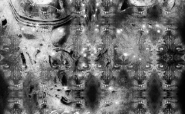
|
|
Why political intellectuals, do you incline towards the proletariat? In commiseration for what? I realize that a proletarian would hate you, you have no hatred because you are bourgeois, privileged, smooth-skinned types, but also because you dare not say that the only important thing there is to say, that one can enjoy swallowing the shit of capital, its materials, its metal bars, its polystyrene…
|
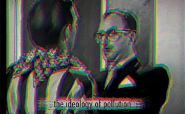
|
|
“A person must shake someone’s hand three times while gazing intently into their eyes. That’s the key to memorizing their name with certainty. It is in this way that I’ve remembered the names of 5,000 people who have been to the Horse Hospital,” Jim Hollands told me. Hollands is an experimental filmmaker, musician and curator. In his childhood, he suffered through tough social situations and…
|
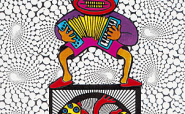
|
|
There’s 130 kilos of fat, muscles, brain & raw power on the Serbian contemporary art scene, all molded together into a 175-cm tall, 44-year-old body. It’s owner is known by a countless number of different names, including Bamboo, Mexican, Groom, Big Pain in the Ass, but most of all he’s known as MICROBE!… Hero of the losers, fighter for the rights of the dispossessed, folk artist, entertainer…
|
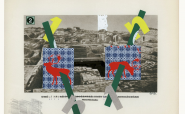
|
|
Nick Land was a British philosopher but is no longer, though he is not dead. The almost neurotic fervor with which he scratched at the scars of reality has seduced more than a few promising academics onto the path of art that offends in its originality. The texts that he has left behind are reliably revolting and boring, and impel us to castrate their categorization as “mere” literature.
|
|
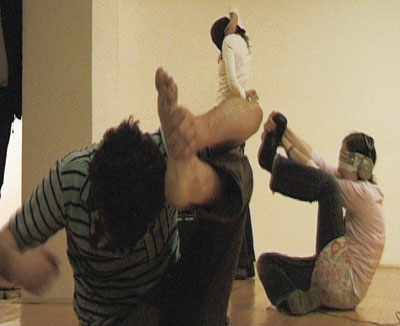










Comments
There are currently no comments.Add new comment